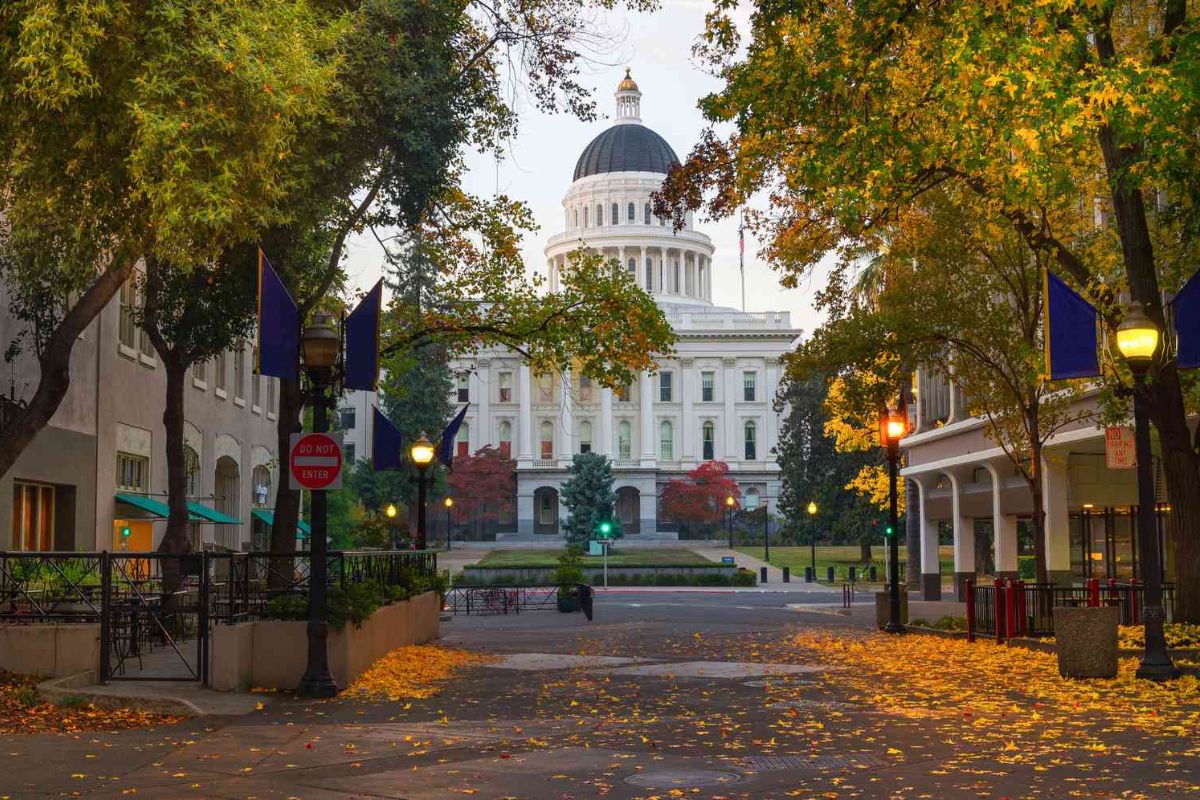
Sacramento's weather is a mix of surprises and predictability. Did you know that Sacramento enjoys over 260 sunny days each year? That's more than two-thirds of the year basking in sunshine! Summers can get quite hot, with temperatures often soaring above 90°F. Winters, on the other hand, are mild and wet, with average lows around 40°F. Rainfall is mostly concentrated between November and March, making the city lush and green during these months. Despite its hot summers, Sacramento rarely experiences extreme weather events like tornadoes or hurricanes. Curious about more weather quirks in Sacramento? Keep reading to uncover some fascinating facts!
Sacramento's Climate Overview
Sacramento, the capital of California, boasts a unique climate that combines elements of both Mediterranean and continental climates. This blend results in some fascinating weather patterns. Let's dive into some intriguing facts about Sacramento's weather.
-
Mediterranean Climate
Sacramento experiences a Mediterranean climate, characterized by hot, dry summers and mild, wet winters. This climate type is typical of regions like Southern California and parts of the Mediterranean Basin. -
Hot Summers
Summers in Sacramento can get scorching, with temperatures often exceeding 100°F (38°C). The hottest month is typically July, where average highs hover around 93°F (34°C). -
Delta Breeze
A natural air conditioner, the Delta Breeze, often sweeps through Sacramento during summer evenings. This cool breeze originates from the San Francisco Bay and can drop temperatures by 10-15 degrees.
Rainfall Patterns
Rainfall in Sacramento is quite seasonal, with most precipitation occurring during the winter months. Here are some key facts about the city's rainfall.
-
Winter Rainfall
The majority of Sacramento's annual rainfall occurs between November and March. December and January are usually the wettest months. -
Annual Precipitation
On average, Sacramento receives about 20 inches (508 mm) of rain per year. This amount is relatively modest compared to other parts of California. -
Dry Summers
Summers are typically dry, with little to no rainfall from June through September. This dry spell contributes to the region's fire risk during the summer and early fall.
Temperature Extremes
Sacramento's weather can swing between extremes, from blistering summer heat to chilly winter nights. Here are some notable temperature facts.
-
Record High Temperature
The highest temperature ever recorded in Sacramento was 115°F (46°C) on June 15, 1961. This record still stands as a testament to the city's potential for extreme heat. -
Record Low Temperature
The coldest temperature ever recorded in Sacramento was 17°F (-8°C) on December 11, 1932. While rare, such cold snaps can occur during winter. -
Temperature Swings
Sacramento can experience significant temperature swings within a single day. It's not uncommon for temperatures to vary by 30-40 degrees from morning to afternoon.
Unique Weather Phenomena
Sacramento's weather isn't just about heat and rain. The city also experiences some unique weather phenomena worth noting.
-
Tule Fog
During the winter months, Sacramento often experiences Tule Fog, a dense ground fog that can reduce visibility to near zero. This fog forms in the Central Valley and can linger for days. -
Thunderstorms
While not as common as in other parts of the country, Sacramento does experience occasional thunderstorms, particularly in late spring and early summer. -
Hailstorms
Hailstorms can occur in Sacramento, usually during the spring. These storms can produce hailstones ranging from pea-sized to golf ball-sized.
Impact of Climate Change
Climate change is affecting weather patterns worldwide, and Sacramento is no exception. Here are some ways climate change is impacting the city's weather.
-
Increased Heatwaves
Climate change is leading to more frequent and intense heatwaves in Sacramento. These heatwaves can pose health risks and strain the city's power grid. -
Drought Conditions
Prolonged droughts are becoming more common in Sacramento due to changing climate patterns. These droughts can impact water supply and agriculture in the region. -
Wildfire Risk
The combination of dry summers and increased temperatures has heightened the risk of wildfires in and around Sacramento. These fires can cause significant damage and pose health hazards due to smoke.
Sacramento's weather is a fascinating mix of extremes and unique phenomena. From scorching summers to dense winter fog, the city's climate offers a little bit of everything.
Sacramento's Weather: A Quick Recap
Sacramento's weather is a mix of extremes and surprises. Summers are hot, often hitting triple digits, while winters are mild with occasional rain. The city enjoys over 250 sunny days a year, making it a great place for outdoor activities. However, the Sacramento River can cause foggy mornings, especially in winter. Thunderstorms are rare but can happen, adding a bit of excitement to the otherwise predictable weather. The Delta Breeze offers a refreshing break from the summer heat, cooling things down in the evenings. With such diverse weather patterns, Sacramento keeps residents on their toes. Whether you're a fan of the sun or prefer cooler, rainy days, Sacramento's climate has something for everyone. So, next time you're planning an outing or just curious about the weather, remember these key facts about Sacramento's ever-changing skies.
Was this page helpful?
Our commitment to delivering trustworthy and engaging content is at the heart of what we do. Each fact on our site is contributed by real users like you, bringing a wealth of diverse insights and information. To ensure the highest standards of accuracy and reliability, our dedicated editors meticulously review each submission. This process guarantees that the facts we share are not only fascinating but also credible. Trust in our commitment to quality and authenticity as you explore and learn with us.
